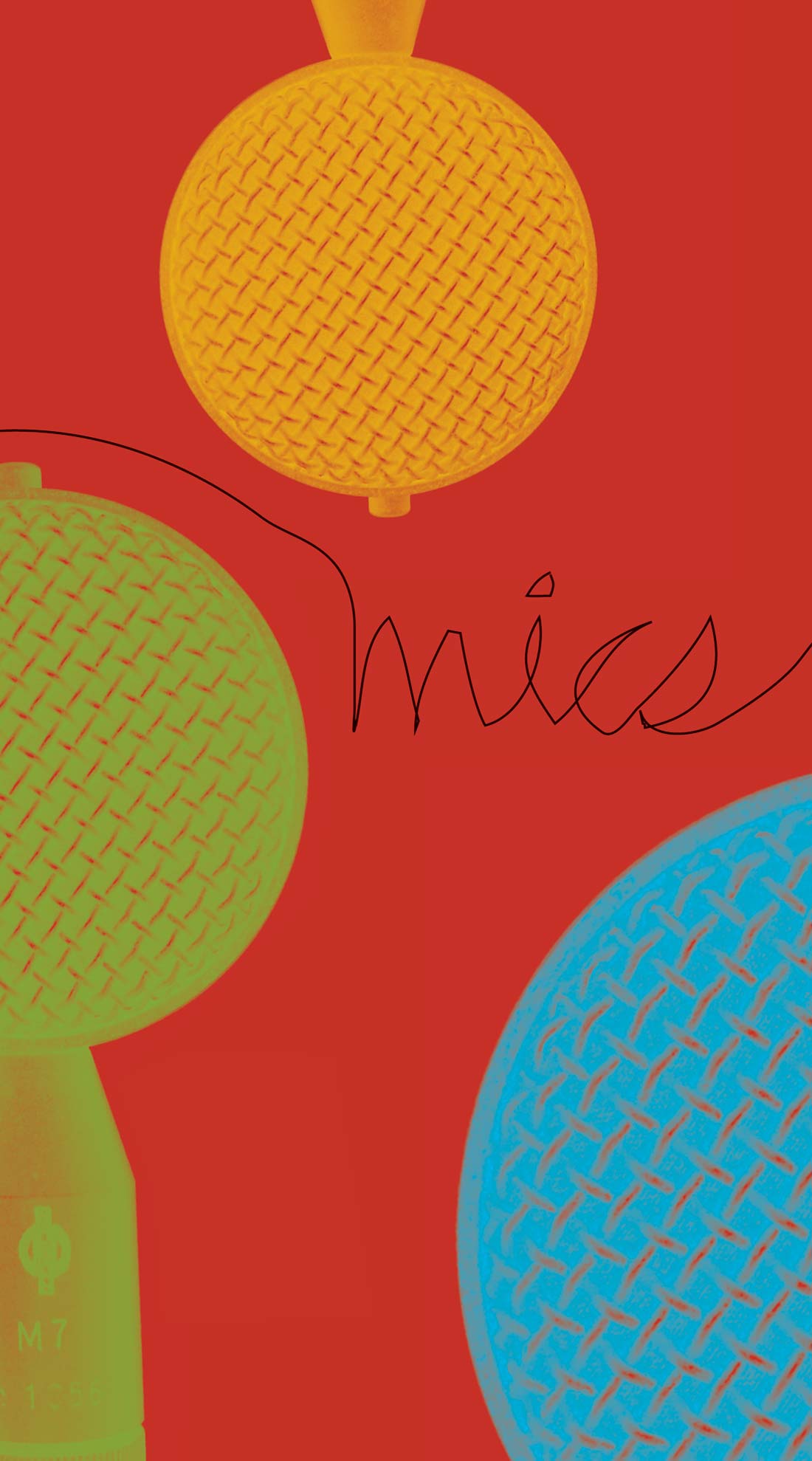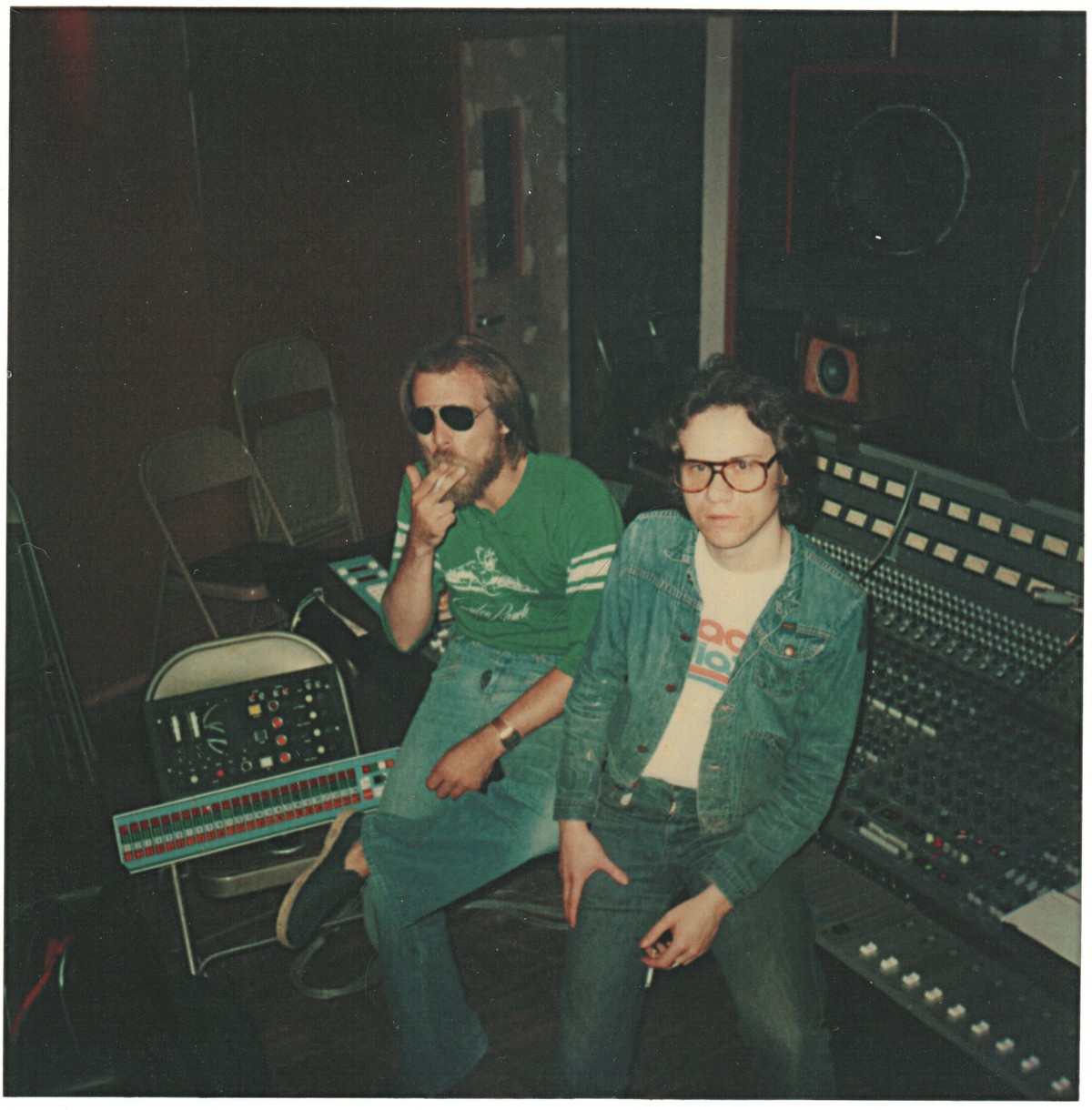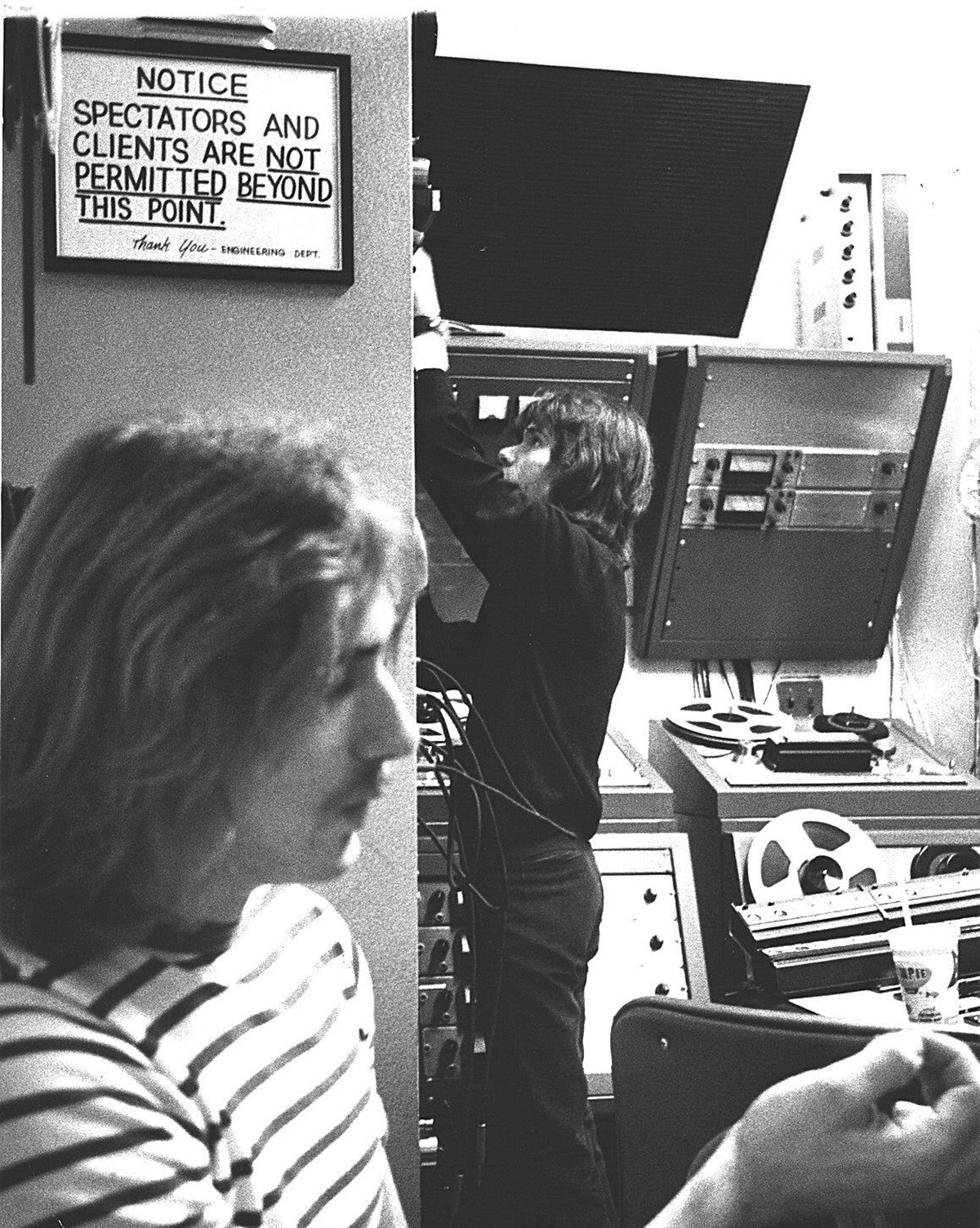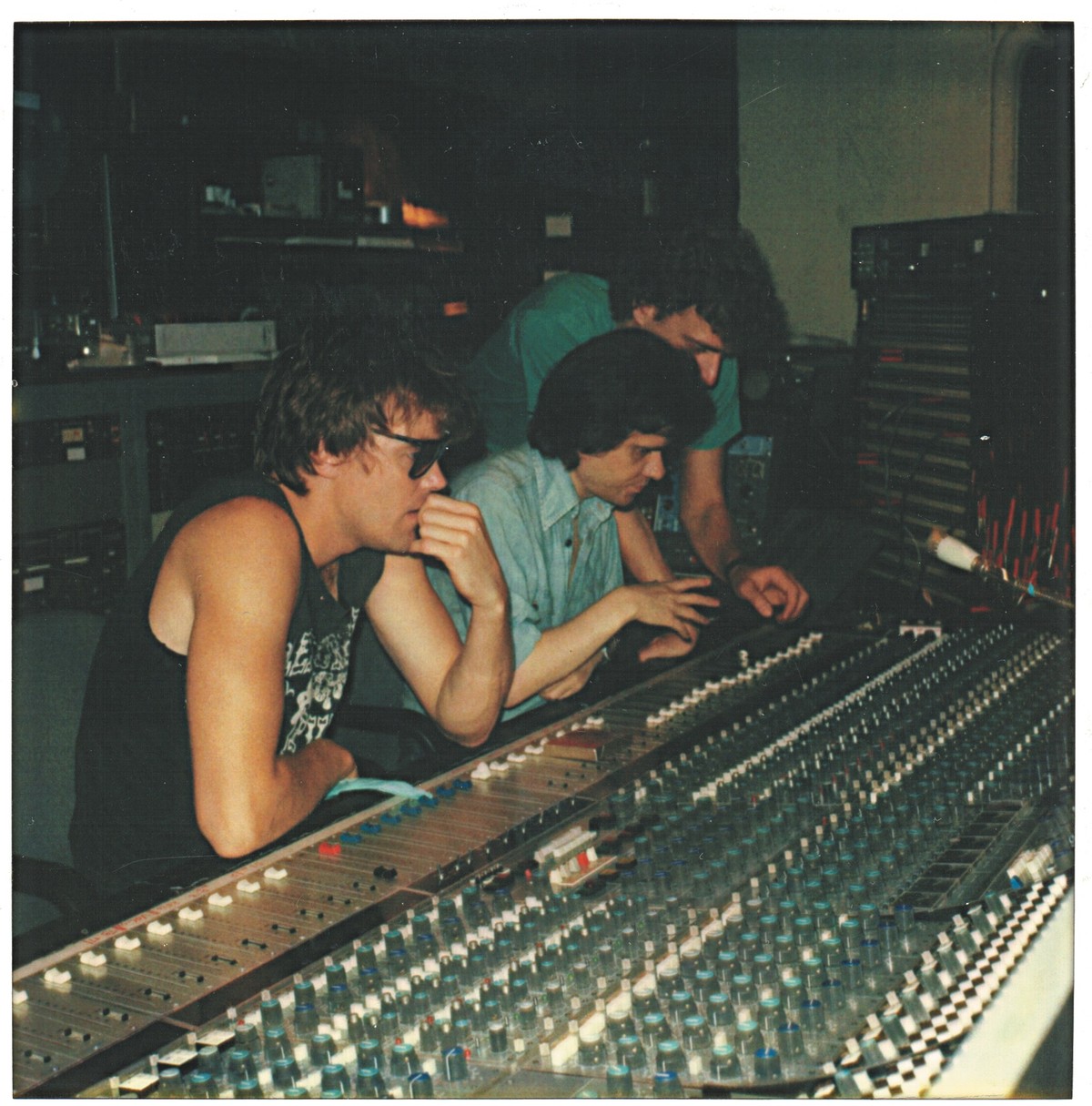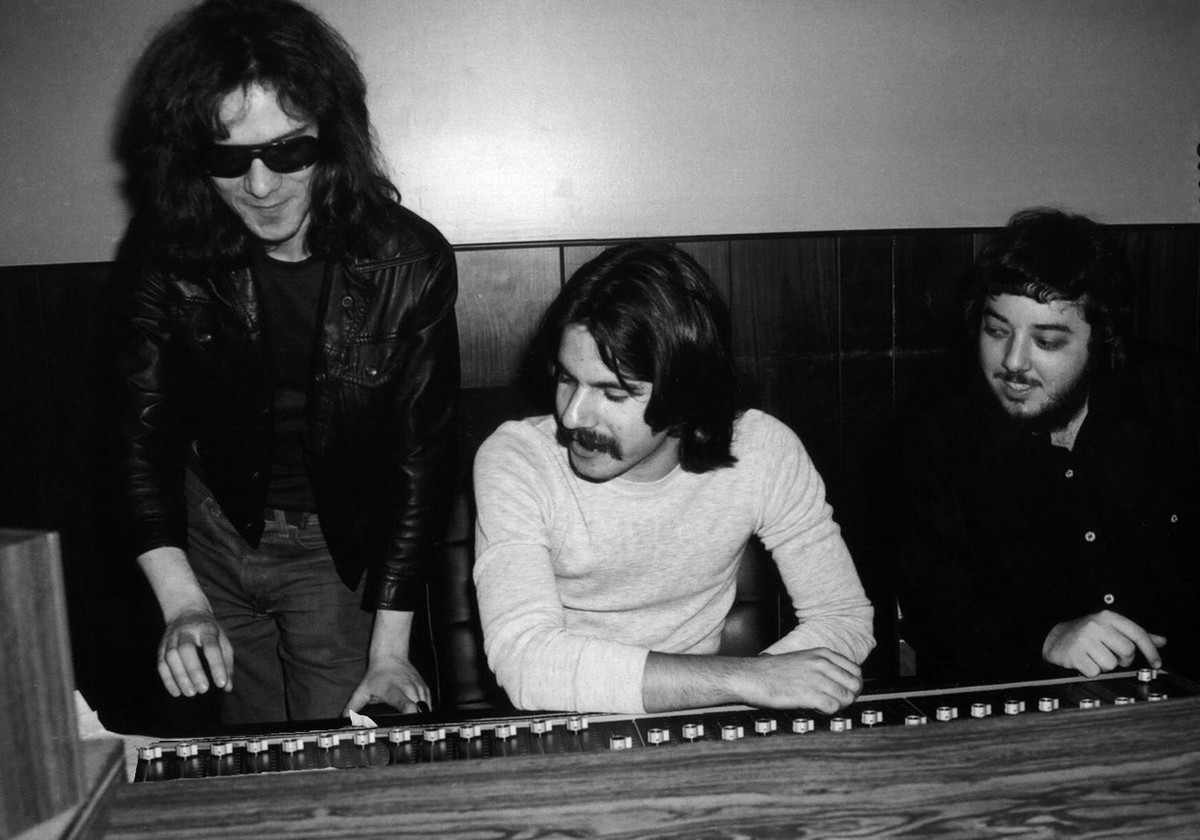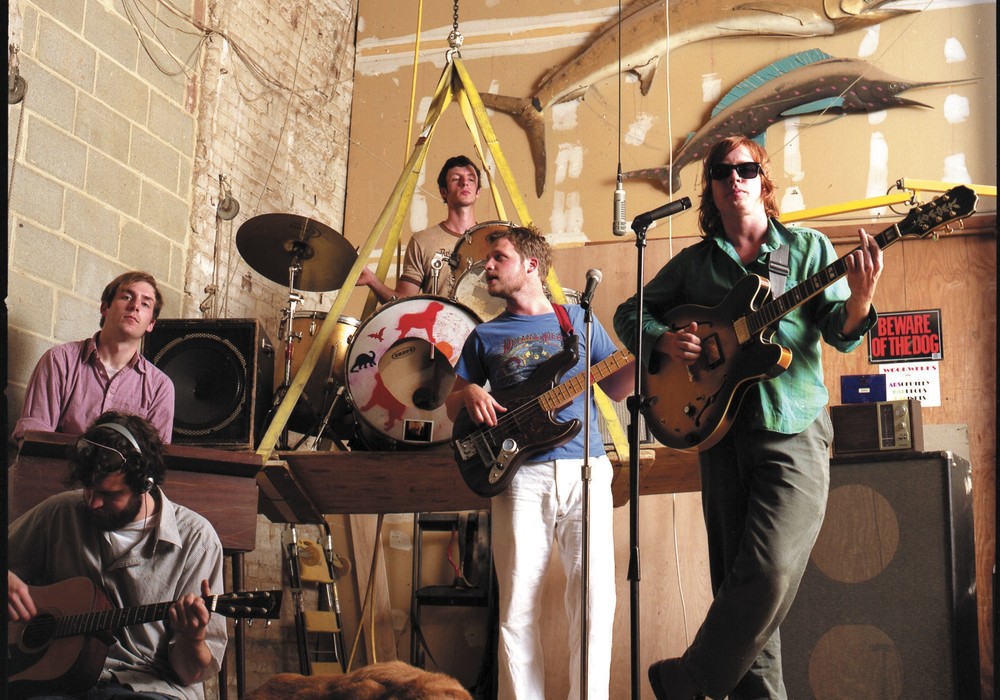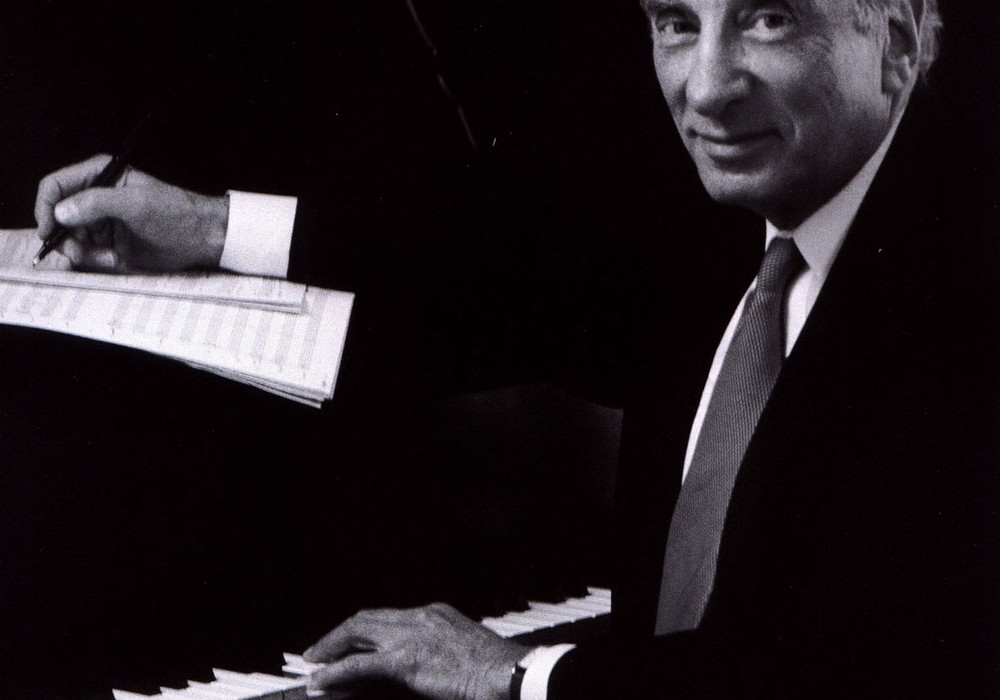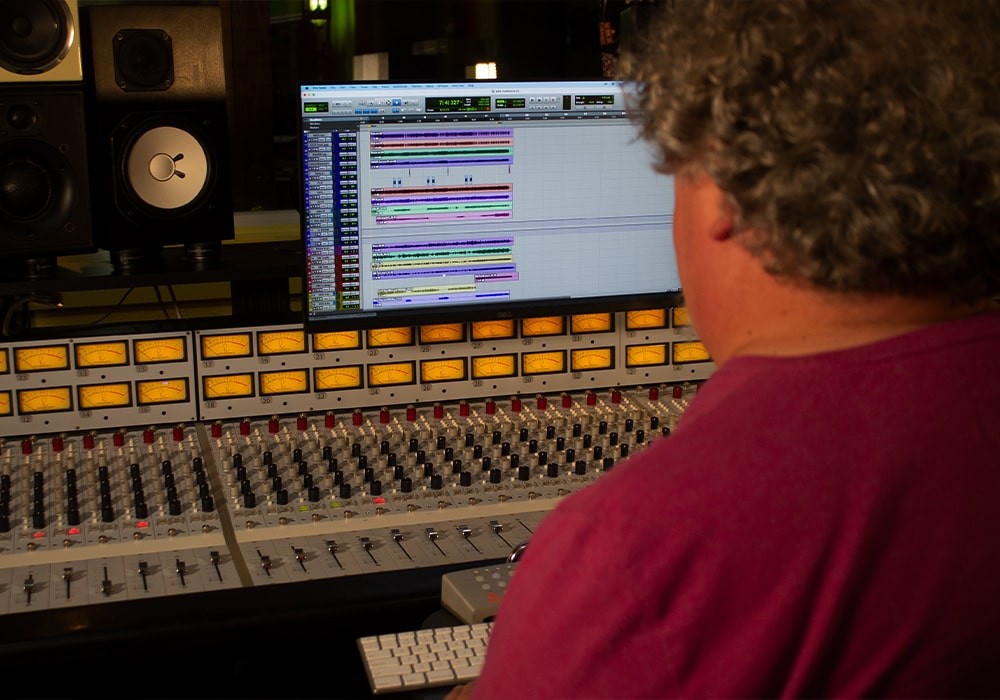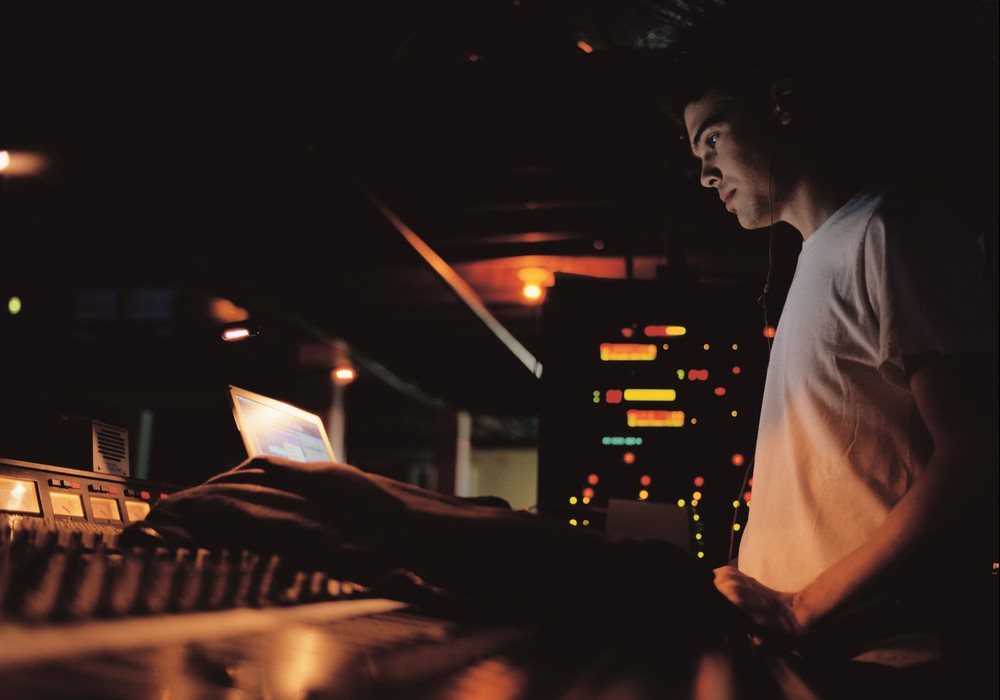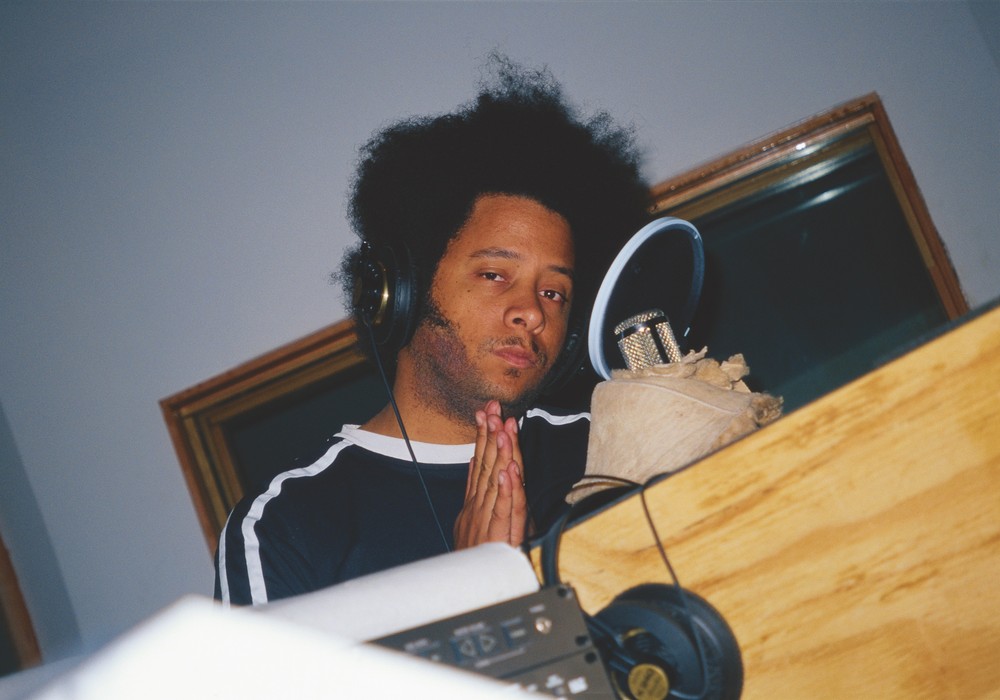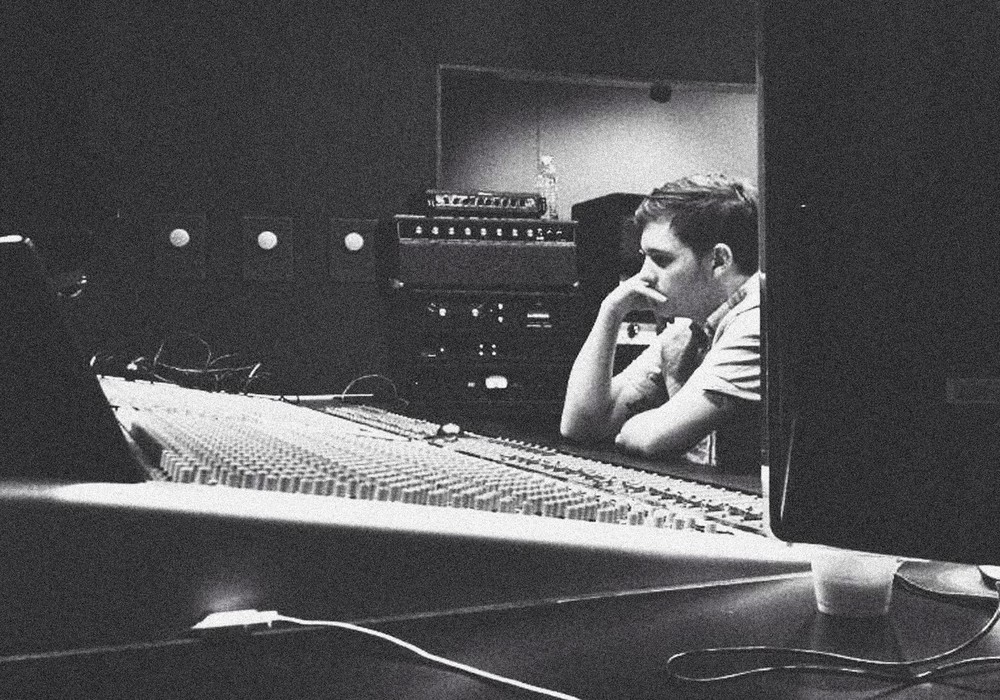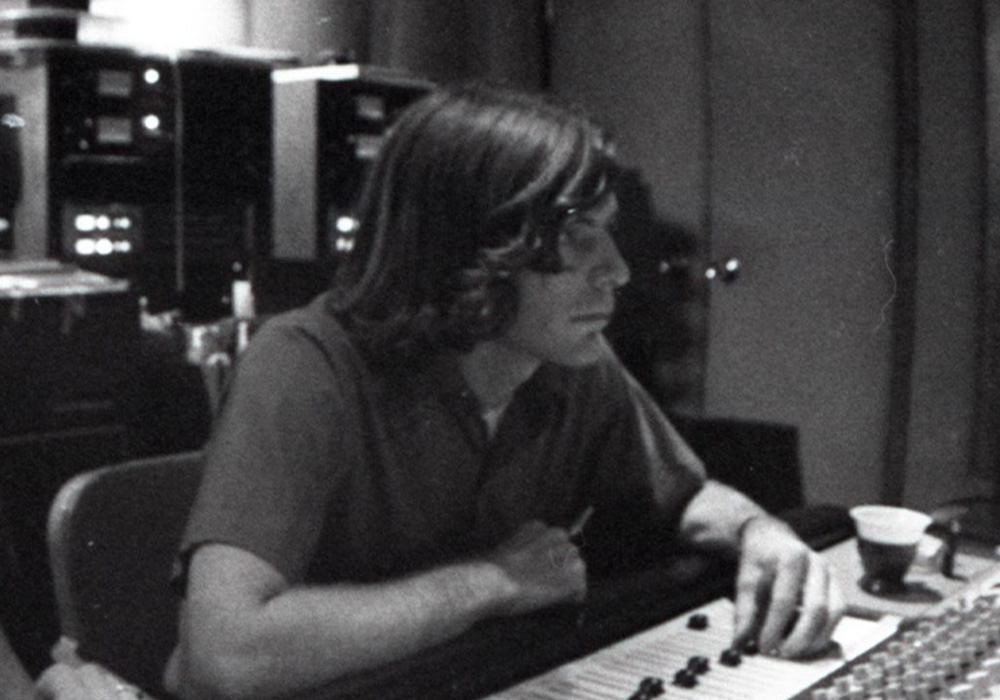The New York city-based Ramones arguably began and boosted the punk rock movement back in the mid-1970s. They took the world by storm and inspired a multitude of musicians to form bands with a similar spirit, letting loose musically with maximum energy. They are the true spirit of punk rock. Tom Erdelyi, a.k.a. Tommy Ramone, is the band's original drummer and only surviving member of the original lineup. Erdelyi is the legendary foundation to the band, because without this Hungarian-born musical mastermind, the band, in many ways, would not exist. While he and original members Joey, Johnny and Dee Dee drove the band onstage and freed the souls of the audience at a time when music was overtly polished and sometimes contrived, Erdelyi also acted as creative seer to the band behind the recording studio console. He produced and/or co-produced their legendary records in the early phase of the band's career. In the late 1970s he decided to step down as their drummer to keep from being distracted and ravaged by touring and the like, opting to focus on and hone his recording and producing skills. Besides the Ramones, Tom Erdelyi contributed his sonic wares to bands including The Replacements, Redd Kross, Talking Heads (their first single), Collider and the Continentals.
I read somewhere that you were an assistant at some studio in New York City in the late 1960s. What was the studio like and what did you learn from all that. Were there any particular 'mentors' for you from those days?
In 1968 I met a friend of mine on the subway, his name was Jack Malken, and he told me that he was an engineer at a recording studio. I said, "Wow, can I come down and see the place?" And he was nice enough to invite me down. I went there and I was taken aback. It was the most amazing thing I had ever seen. The place was called Dick Charles Studios and it was located in the United Artists building on 7th Avenue and 49th Street. It was a small studio where many important clients made their demos. Major record and publishing companies. It was one of the few small studios that had an eight-track recorder at the time. It had Ampex recorders, an 8-track, a 4- track, a stereo and two full track mono machines. At the time, clients were still doing mono bounces from machine to machine to save money. Sound on sound. They had a Neumann tube stereo console, which was amazing. It had ten or twelve input channels and two out. Since it was a Neumann, everything was first class, which meant fancy knobs, meters and faders. The EQ section was primitive by modern standards, but it had one, as many of the consoles of that era did not. No pan-pots, they had not been invented yet. Left, right or center. If you wanted to pan you had to use two channel strips. They had one Teletronix limiter/compressor and one Pultec equalizer. Tannoy monitors were placed on the sides of the small control room, so it was like listening to headphones. They used KLH bookshelves for near-field mixing. The studio room was not too big, maybe 15 by 25 [feet], but it was well stocked with a Hammond organ, a piano, a tack piano, drums and lots of percussion. It was a great place to start and that is where I started.
And then you went on to the Record Plant...
The original Record Plant. Part of the staff of Dick Charles went on to create the Record Plant so I had that connection. I was in the right place at the right time and was lucky enough to get a job there. While there I had the opportunity to work with Jimi Hendrix, Mountain, John McLaughlin, Herbie Hancock and various other artists of the era — lots of jazz, R&B and rock.
The studio was quite 'advanced' for the time wasn't it?
It was one of the first 16-track studios. They had an Ampex video deck converted to 16 tracks of audio. That is what the original 16 tracks were. While I was there, the first or second 24-track ever made was delivered to studio B. This was also a converted video deck. We also had Scully 12-tracks, 4-tracks, stereo and mono machines. The consoles were by Datamix. It was a simple console by modern standards but they did have pan-pots and a full EQ section. We monitored through six large Tannoy speakers, each powered by its own Macintosh 75 watt mono tube amp. They wanted to impress the clients. Both the control room and studio of A were quite large. The place was a converted parking garage. For reverb, we used EMT plates at both the Record Plant and Dick Charles. This was 1969 and things were starting to get a little more complex. It was the first time that multitrack studios were really starting to happen. It was a changeover from the old-school union engineer system to the independent studios and freelance engineers and producers.
So how was it working with and being in the presence of Jimi Hendrix?
Working with Hendrix was something else. I was still quite young and he was at the height of his fame. To me it was like working with the gods. We would set up two full stacks of Marshalls as if he was playing live. He wanted to be able to get lots of sustain and feedback. Since the studio was a large room we had plenty of space to build the sound. We mic'd the amps with Neumann U87s, which were new at the time. For the bass [guitar] we used Ampegs, the precursor to the SVT. I don't recall the model but they were large. This was the Band of Gypsies, with Buddy Miles on the drums. In those days we did not use too many mics on the drums. There was a theory that if you used too many there would be phase problems. We used an Electro Voice dynamic for the kick, a Sure or AKG dynamic for the snare and one U87 for the overhead. That was it. For Mountain we used Sunn amps for both guitar and bass. I think we just started to experiment with DIs for the bass. This was to be the Mountain Climbing album.
This would have been Hendrix tracks like "Room Full Of Mirrors" and such [available on the First Rays Of The New Rising Sun posthumous 1997 release]. How was it to work Hendrix as a person? What was his work ethic like?
Hendrix was great to work with — he was friendly and playful when he was in a good mood. He would do many takes of his guitar parts. He was a perfectionist and a brilliant musician. These amazing things would flow out of him that actually never ended up on tape. He was always improvising and creating. We would keep very late hours. Sessions would start at 8 or 9 PM and go through the night till the dawn hours. Sometimes he would seem insecure. He once asked me if I thought Leslie West of Mountain was better than he was. For a second I thought he was kidding but then I realized that it was a serious question. I said, "Of course not," and I was a big fan of Leslie West. He was competitive and wanted to be the best.
And there you converged with another legend, Tony Bongiovi, who you ended up working with off and on throughout the years...
I learned a lot from my experience there. [He was] of my mentors. He was a brilliant young man from New Jersey who, in his teens, got himself some expensive Macintosh amps and audio equipment and started to DJ at his local high school dances. That is how he got into audio and from there he went on to engineer at a Jersey recording studio. His big thing was that he went on a pilgrimage to Motown studios in Detroit. He hung around there for a while and learned some of their secrets and techniques. He then came back east and got a job at the Record Plant where he was known as Tony "Motown" Bongiovi. So I met him there and we got along well and I learned a lot from him.
You produced/co-produced the first few Ramones records.
After the Record Plant I got a job at a film company. My new interest was avant-garde films. Soon after I got involved with a recording/rehearsal studio called Performance Studios. My friend and business partner, Monte Melnick, who was to become the Ramones' tour manager, and I had a great place that attracted many of New York's best bands. It was there that I got involved with the Ramones. What happened was that I saw a group called The New York Dolls and the idea hit me that what was going to be important in the coming days was not so much musical virtuosity, which was everywhere, but a new kind of thing where ideas mattered. We wanted to bring back the essence of primal rock 'n' roll. I was trying to figure out how to do that and I thought of the friends I grew up with in my hometown of Forest Hills, Queens. I thought those guys would make a great group. They could play as good as the Dolls and they were very colorful people and so I got in touch with them and eventually got them to put a band together, which was the Ramones. I was originally their manager but later I ended up also playing the drums as we had trouble finding anyone capable of picking up the style of drumming that we needed. Fortunately the guys in the Ramones turned out to be not only colorful but also very talented. They were coming up with these fabulous original songs. We soon had something really powerful going. When we first went in the studio to cut our demo we were coming up with some unique recording ideas for the times. We decided to go backwards a bit. We decided to use hard left and right ping-pong stereo effects like we heard on old Beatles records. We wanted to make a record that sounded different. We ended up transferring those experiments onto our first album.
Just how many Ramones records did you help make?
I worked as producer on six Ramones albums.
Do you get any royalties from producing the Ramones records?
Yes, I do get royalties for them.
How did you fit into the band dynamic?
I fit into the band as the 'creative director', songwriter, arranger and producer — sort of a jack-of-all-trades. I was also involved with the creation of the image and aesthetics of the band as well as the publicity and promotion. I was acting as producer, manager and musician.
There was a co-producer for the first Ramones album — Craig Leon.
Craig Leon was the A&R rep at Sire records. He was the one who signed us and was a budding producer himself. We were happy to have him produce, as we were grateful for him signing us. He was a huge fan so we felt comfortable working with him. He did watch the clock, as our budget was quite low.
I also noticed there is lots of harmonized vocals going on within it — sounding somewhat like the Beach Boys.
We would use all kinds of harmonies in the studios. Yes, the Beach Boys were one of our influences, especially for harmonies. We used people who were available in the studio, preferably if they could sing, for the background vocals. Ed Stasium [Tape Op #98], the engineer, had a good high voice and we would use him often. We all sang a little bit.
How did you meet Ed, and can you shed some thoughts into his input and how essential he was to the records?
Ed Stasium I met when we did Leave Home. Tony Bongiovi who worked with us on the album brought him in. We got along great and he was an excellent engineer, very enthusiastic and a hard worker. He was also a good musician and guitar player and was useful for some overdubs. I would explain what we needed either showing him or humming it to him and he would execute a great version of it. As I said before I learned a lot from Tony. He knew about records. How they should be made. He felt that a record should sound like a record. That it should not sound real or live but it should have a texture added to it. Something 'unreal' added to it. That was the difference between a record and a recording. He loved using percussion effects. He was sort of old school with ancient wisdom and knowledge that we were able to recycle. Ed was very up to date. He was into the latest techniques of recording technology. The three of us made a very good team.
And yourself?
I contributed with my creativity, insights and original ideas. My biggest contribution was my taste, which is all-important as to what works and what does not.
Were budgets ever an issue with the Ramones records? Did more money, in a way, make 'improvements' sonically and with the playing? And did you notice any improvements with your own playing skills during your time with the band?
As far as budgets for production, we progressed from very low, under $10,000 for the first album to low about $30,000 — 60,000 for the others. We never had big budgets for the albums I was involved with. We always had to work under constrained circumstances. Of course, on the higher budgeted albums we could spend a little more time in getting what we wanted.
What kind of mic'ing situations went on? Any tips can you offer to punk and rock recording enthusiasts?
To record the Ramones we used Marshall amps for the guitar and Ampeg SVTs for the bass. We mic'd the Marshalls with SM57s up close and U87's about six feet away. For the bass we mic'd with EV RE20s and sometimes an SM57. We also went direct and mixed the two. For the drums we used two very high overheads (U87), two lower overheads and hi-hat (Sony electrets), tom toms (Sennheisers), kick drum was an RE20 and the snare was one SM57 on top.
I take it your skills on playing the drums had to speed up and definitely develop since you put yourself in those shoes as a necessity?
My own playing improved from album to album. I had never played drums before in my life. I was a guitar player. So I had room to improve and I did.
Leave Home was done/mixed in various studios — Le Studio, in Quebec, Canada, Track Records in DC, and I think somewhere in NY Can you talk about the studios that were used for each album of the Ramones that you worked on and what appealed about them?
We used many studios for this record because of the low budget. We got good deals at these fine studios but for a limited time so we had to finish up and move. So we got in Tony Bongiovi's single engine private plane and we would fly from Washington to Quebec, from studio to studio — it was kind of funny. We flew from New Jersey to Washington where we mixed half the album on a nice Neve console. Then we flew up to Montreal and mixed the other half on a large Trident. The first album was done at Radio City Music Hall in New York at a place called Plaza Sound. We had a 3M 16-track and an API console. The studio was a big room. It was originally an NBC radio studio from the golden age. It was a beautiful art deco room with a Wurlitzer pipe organ built in. The second album was recorded at a place called Sundragon, which had a custom console made by Roger Mayer. The EQ section was like miniature Pultecs that had separate boost and attenuation controls. They had one of the first Studer 16-tracks in the United States. It was a very nice and cozy studio. The third album, Rocket to Russia, was recorded at Media Sound where we had a Neve console. It was a huge room, a converted church. Big, high ceilings so we were able to get a good drum sound especially on the next album Road to Ruin, which was also recorded there. Rocket to Russia was the first album to be mixed at the famous Power Station recording studio. The studio was designed and built by Tony Bongiovi and Ed Stasium. The design of this studio was one of the most influential of the era. The studio was still under construction and we did not have an EMT plate. So we had to set up a live echo chamber using a stairway with a JBL speaker and a U87 set up. It sounded pretty good. We had a Neve console and 24 Pultec EQs in a huge wooden rack, one for each channel. Tony had them custom made by the retired manufacturer of Pultec. Tony hated running out of Pultecs. The recorders were a 3M 24-track and a Studer 2-track. For monitoring we used Altec 604 Es, which I loved and still miss. For near fields we used JBL 100s, which Ed loved but I hated.
How long did you work on doing the vocals on this record?
We would do the vocals for this album fairly quickly. We would put it down and immediately double track it. Joey was very good at double tracking. Joey on the early records was fairly easy to work with. Later on he became pickier and we would spend a lot of time on vocals doing composites and such.
Rocket To Russia sounds like there are somewhat buried acoustic guitars going along with the electrics, which adds a very nice touch and light contrast and texture to the sound. Also the vocals are low in the mix...
We used acoustic guitars on the more country and western type songs. We felt that was appropriate. We rented a Martin D28 to do those. It was interesting watching Johnny strumming away on it. We spent a little more time mixing Rocket to Russia and had more time to blend the vocals to my liking.
What do suggest to obtain a good raw, heavy guitar sound?
Turn the amp all the way up. No effects, put a close mic and a far mic and blend. It also helps to have Johnny Ramone playing the guitar. He used a hot single coil Mosrite that had a lot to do with his sound.
Back to Road To Ruin — what direction were you aiming at for this record? I noticed some pop song elements going on. I noticed there are really no backing vocals going on — just Joey.
Road to Ruin was the first record where I was just the producer. That gave me a lot of freedom because I did not need to play the drums. I could concentrate totally on the production and working with Mark allowed us to develop a new drum sound. It was a different type of record; it was a darker record. We were sort of going for more of a mainstream sound. We were experimenting with putting in more guitars. Ed Stasium and I did some guitar overdubs for it. On one song we did a backward guitar solo.
How much time was spent getting drum sounds on those first few albums? How confident were you at this very early stage in your career as a producer, musician, and the band's feelings overall?
I certainly was not happy with the drum sound on the first album. But we had no time and I was placed in a booth a mile away from the control room. It was sort of a desperate situation. The engineers did not know what to make of us. They thought we were a bunch of hooligans. I tried to explain to them that I was an engineer myself but they did not take to my recommendations. And we had no time. As far as how much time was spent on getting a drum sound — none. And later on I found out that they Kepexed [gated] everything. The Kepex was just invented and these guys were going crazy with it. For the other albums we had the luxury of actually getting a drum sound. I was very confident about the Ramones. I knew we were the most innovative and promising band around. I just wish more people had realized that at the time. I was having a great time producing the records. I was in my element having total creative control. After the basic tracks were laid down and the vocals done, I was on my own with only Ed or Tony there. The Ramones never stepped into the studio until the finished product was ready to be played. It was creative heaven. As far as my drumming is concerned, I just played the parts that I felt would help us sound good. The style I played was the style I liked. I was influenced by the drumming of Al Jackson of Stax records and Charlie Watts of the Stones. A simple solid beat. I was also going for a flowing feel to drive the music forward without bogging it down.
How about the song "Go Mental"? I noticed some interesting effects going on that give a nice storytelling/dramatic effect.
We used genuine tape flanging on "Go Mental" — we also used that effect on other songs. There was no other way of getting effects like that in those days. Everything was done using two tape recorders synced up. You lock up two machines and you vary the speed of one. You can also get automatic double tracking by the same method but at a longer delay. This gave you a much fatter effect than you get with digital devices nowadays. We would try to keep things tasteful and not use too many effects. We used them when we felt they added something to what we were trying to say.
Do you prefer double-tracking to doing choruses with additional people at once and so on?
The basic tracks were laid down with the full rhythm section. And then we would use overdubbing techniques for lines and effects. The background vocals would be done with a group of people.
The demos for Too Tough To Die: Who played on those?
For TTTD we just went into the studio and I pretty much recorded them live. I set up the mics in a special way with the drums in the open room facing the band with the room mics picking up all the instruments. Ed was not available for those sessions so I did those by myself. Later he came and did four songs with me, those four are the ones with Joey singing.
On the Too Tough To Die record, did Ritchie [Marky's 'temporary' replacement for almost four years] do the vocals on the demos?
For these demos Dee Dee would do the vocals for his songs and Ritchie would do the vocals for his and Joey's songs. Most of the songs on that album are by Dee Dee.
And what about Dave Stewart and his involvement?
The Ramones manager, Gary Kurfirst, brought in Dave Stewart. Kurfirst also managed the Eurythmics. Stewart was brought in on the premise of giving the Ramones a "hit" record, thus he co-produced one song with us.
The great It's Alive live record — was this a full-on 'true' live recording or was there any fixing going post- production-wise?
For It's Alive we mic'd up everything on stage as we would in the studio but without the baffling. The drums are 100% original. We mixed the songs in a marathon session with no interruptions, which helps with the great feel of the record.
The front cover photo of the album shows the mic'ing of the drum kit. There must be twenty microphones arrayed around that thing.
We were using one set of mics for the house and one for recording. I had just left the band and they wanted to promote a record with their new drummer, which was Road to Ruin. I don't think they realized what a great record It's Alive was.
Later on you produced the Replacements' Tim record.
[Tim] was a wonderful experience for me. I loved working on that record. I was going for something unique and I think we were able to come up with an original sounding record.
I'd heard Alex Chilton was supposed to produce Tim, but he was canned at the last minute by Sire [Records]?
Alex Chilton was originally supposed to produce the Tim album but I don't know what happened. The group and their manager, Peter Jesperson, were big fans of Chilton.
How about dealing with people, especially on the Tim record. Bob Stinson was going through a drinking stint.
It was fascinating working with Bob Stinson because I hardly ever saw him. Throughout the six weeks I was in Minneapolis working on the record I saw him a total of three times. I think he only came to the studio once. So we had to record all his parts in one exciting and convoluted day. And then he was gone. I loved working with him. He was like a man possessed. He would get these cascades of sound coming out of his instrument and amp. He was a natural player who played totally out of his head. We recorded everything he played and used his parts where they fit well. It was wonderful working with a talent like Paul Westerberg. You just place a mic in front of him and great things happen. One of my priorities was keeping them sober. Tim has to be their most sober album. That helped give them a new dimension. I got along well with all of them, including Bob. I am good at working with people like that. I try to get into their world and try to snap them out of it a bit. Bring them to a new reality where we combine their vision with mine. I've quite often worked with eccentric people. I seem to be able to have a rapport with them.
The bass seemed to sound 'direct'.
If we used more of the direct it was because it probably sounded better. Tommy Stinson was using a Rickenbacker bass and some weird amp I don't remember. I prefer Fender basses for recording but wanted him to be comfortable. It was important to me to make them as comfortable as I could. I wanted them to have fun and relax. I also wanted them to have a unique sound and the Rick helped that.
Why do you think the band had asked you to do this record?
The band asked me to do the album because they wanted someone they could trust on a major label. They were concerned about selling out. They were also fans of my work.
There also seems to be a preference to drums in the mix.
The drums are not that loud when one compares them to other rock albums of that era. As a matter of fact I was careful not to join the crowd with that explosive Phil Collins sound that everyone else was using at the time. I did not want the record to sound dated in the future. I like having the drums well balanced, as I do everything else. We recorded and mixed the whole project on a Neotek console. It did not have enough channels to mix with so we had to add on a small Soundcraft board as an extension to put the effects through.
You did Redd Kross' Neurotica record. Any impressions? It's kind of psychedelic, and a regression from the smooth, slick production styles that you kind of got into...
The Redd Kross album was a lot of fun. It was a very low budget project. We did it quickly. We did it in several studios all on Trident consoles. It was a psychedelic album because the band was into the late '60s and loved The Beatles and Sonny and Cher. I just got in their playpen and had a good time combining their vision with mine.
What were the in-studio setups like?
The basic tracks were recorded in a large room for the drums and the bass and guitars were isolated. They got good deals at the studios so we could keep the budget down, and of course we worked fast. The overdubs were mainly the vocals and some guitar and percussion everything else was recorded live during the basic sessions. It was a fun record to make, as the band was creative and unique. It was a pleasant experience all around.
What do you think of the latter day R a m o n e s records?
I think all the Ramones albums are good. Certainly the songwriting is always there. The production varies from album to album, some more appropriate than others. My favorite Ramones album is Rocket to Russia, followed by the first album. Road to Ruin is a sentimental favorite because we put a lot of work into it and we came up with a great sounding record. Many producers were influenced by our work on that one and they went on to create platinum albums for other artists using our techniques. One has to be aware of the era these records come from to realize how innovative and powerful they were for their time.
So what are you up to as of late?
Right now I am working on a bluegrass and old-time music-influenced endeavor called Uncle Monk. It is mostly acoustic with a little bit of twangy electric guitar thrown in. I have been doing that for a while now. I am also working as a musical director for a Musical, [Gabba Gabba Hey!] based on Ramones songs [which premiered in Australia this past summer] that we are hoping to bring to America [in 2005].
Any producers and engineers out there you admire work-wise?
My favorite producers off-hand are Phil Spector, George Martin, Trevor Horn [Tape Op #89], Tom Lord-Alge, Roy Thomas Baker and Michael Chapman.
What do you think of current recording technology and do you play around with it much?
I think modern technology is fantastic. It's opening up a whole new world. One just has to learn to get it to sound good. It allows people to make records that would not have had a chance to.
What do you think is the essential basis for a decent, genuine punk/rock record?
Punk rock records should be about feel. It has to be mic'd well and should sound as live as possible.
And, last but not least, are you still into producing and recording?
I have recorded some local up and coming NY bands but only in my spare time. I always keep my ears open and if I have the time and if an artist strikes my interest, then I would consider working with them. But they would have to be innovative and interesting to get me excited. I listen to all kinds of music but I love old-time music. It is the closest thing to the pure spirit of punk rock. It has the same wild abandon and feel. I hope to hear the next great artist. I consider record producing a great art and I am very happy to have been allowed the chance to participate. I am also grateful that some of the records that I have been involved with are considered classics.
